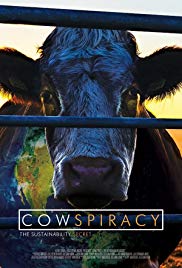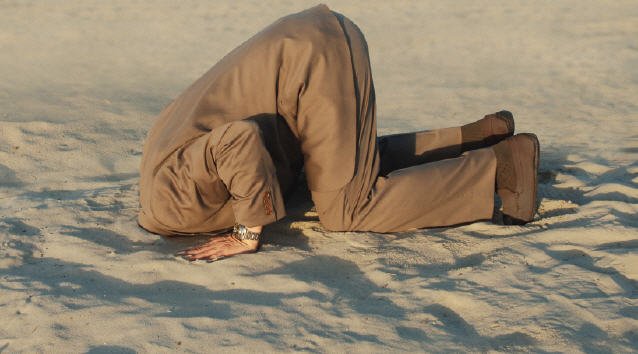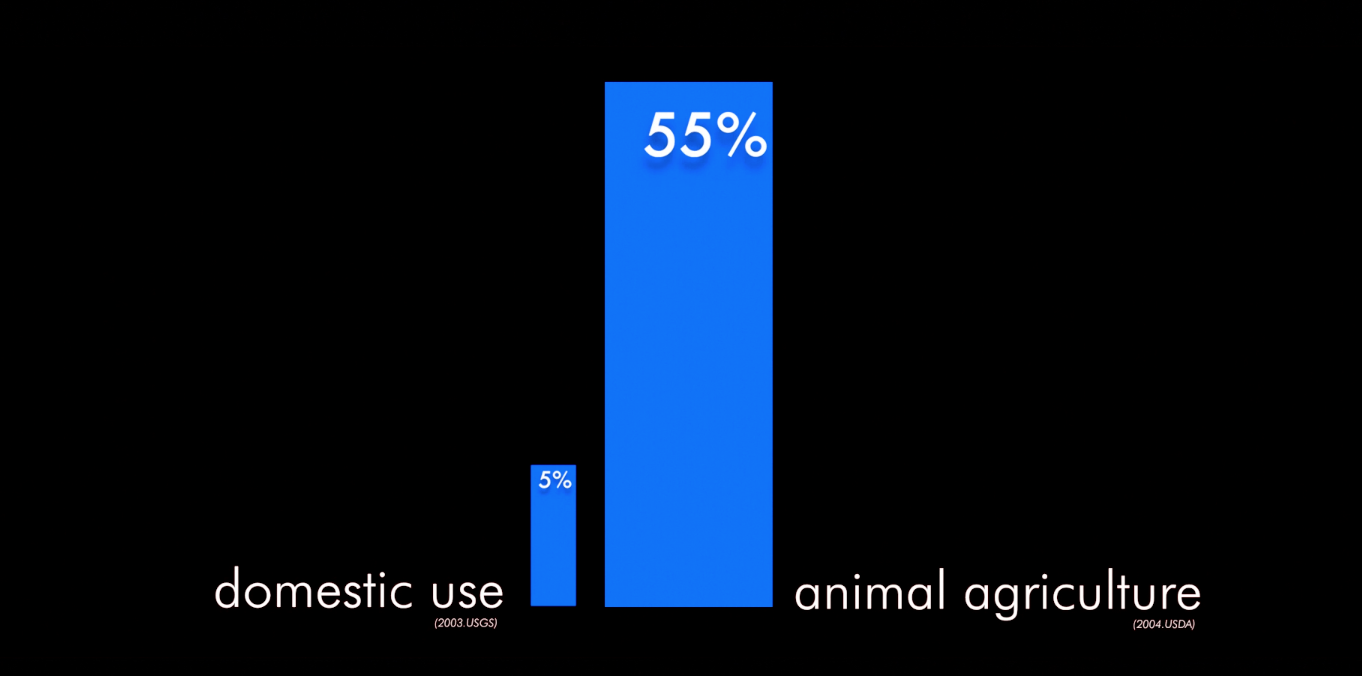AN EXAMPLE OF HOW STATISTICS CAN MISLEAD:
ANALYZING ONE BEEF INDUSTRY RESPONSE TO COWSPIRACY
Suggested Class Discussion
TWM recommends that the class discussion include at least the matters set out below. Write the important points on the board — TWM’s suggestions are in bold. Students may come up with other reasons, or with rebuttals. Encourage a lively debate. The industry response debunked below was an early partial response to the movie. Teachers might want to check for additional industry responses to Cowspiracy and present them to the class for analysis.
Orange italics represent instructions or notes for the teacher.
Teacher: An early response to Cowspiracy by the meat industry is an article entitled Why Ranchers Should Care About The Documentary “Cowspiracy” by Amanda Radke, a journalist for an on-line magazine called “BEEF Daily.” In the article, Ms. Radke quotes a beef industry source, Facts About Beef, to try to rebut claims made in the movie.
Hand out or display the following paragraph:
From Facts About Beef, a beef industry source: “In reality, it takes 441 gals. of water to produce 1 lb. of boneless beef. Farmers and ranchers are committed to water conservation and have reduced the amount of water used to raise beef by 12% compared to 30 years ago. In comparison, 441 gals. of water is a fraction of what is used to produce other everyday items. It takes over 713 gals. of water to produce one cotton t-shirt; 39,090 gals. to manufacture a new car, and 36 million gals./day is leaked from the New York City water supply system.”
Teacher: Let’s analyze these statistics. The claim that a pound of beef takes only 441 gallons of water to produce is very different than the claim in Cowspiracy that a 1/3rd pound hamburger takes 660 gallons. National Geographic estimates that it takes 1,799 gallons to produce one pound of beef. That’s about 1/3rd of 1800 gallons or 600 gallons for a one-third lb. hamburger (but then there’s the bun and the catsup). The authoritative Water Footprint Network estimates that 634 gallons of water are required to produce a hamburger. These are close to the numbers in the movie.
Sources: See The Hidden Water We Use from National Geographic and Water Trivia Facts from the EPA.
Teacher: Can you think of any reasons why these numbers might differ so much from the number given by the Beef Industry?
Guide the discussion so that it includes the following concepts: the larger numbers most likely are more complete, including water use from transportation, the water used to grow the feed, the water involved in producing the electricity to heat the barns, the water required for disposal of waste etc.
Teacher: The numbers for the water footprint of T-shirts and cars provided by the Beef Industry were taken from a source generally accepted as accurate. But let’s look carefully at the Beef Industry’s comparisons.
Teacher: How many times would you wear a typical cotton T-shirt?
Take whatever number the class feels comfortable with and compare the per-usage water footprint for a T-shirt with a bite of hamburger. The following is sample analysis.
If we wear the T-shirt twelve times and the water footprint for producing a T-shirt is 713 gallons, the water footprint for each time we wear the T-shirt is 60 gallons (713/12 ≈ 60.) That’s a lot of water. Some people will wear a T-shirt more than twelve times and their water use for each time they wear the shirt will be less. But assuming we can eat a 1/3 lb. hamburger in ten bites, for 660 gallons per burger, that’s 66 gallons a bite. If we have a big mouth and can eat the burger in five bites, one bite would be 132 gallons. But let’s assume it takes 10 bites to be conservative; that’s 66 gallons a bite. Thus, assuming we use the T-shirt twelve times, each time we put on the shirt it costs about the same amount of water as a single bite of hamburger. And a typical meat-eater will eat meat once or twice a day, day after day after day.
Display or write on the board the following. The numbers may change depending on the class discussion.
Hamburger ≈ 66 gallons a bite
1 day T-shirt ≈ one bite
Teacher: What about the new car statistic? How long do you think a new car will run?
Use whatever number the class feels comfortable with and compare the per-day water footprint for building a car with the water it takes for one bite of hamburger. The following is sample analysis.
Assume that the new car runs for ten years or 3650 days. 39,090/3650 = 10.7 gals of water per day or about 17% of a single bite of one hamburger (10.7/66=.15). Or let’s assume it runs for only five years, and most cars run far longer than five years. That pushes it up to about 1/3rd of a bite of a hamburger — and for this we get the machine that will provide transportation every day. Let’s be conservative and assume the car lasts for five years; that’s less than 1/3rd of a bite for the car for each day. This is just the cost to build a new car, not to operate it. The gasoline and oil used in making the car run would require additional water.
Display or write on the board the following. The numbers may change depending on the class discussion.
1 day car ≈ 1/3rd bite
Teacher: It is true that New York City has a massive leak in the major aqueduct bringing water to the City and about 36,000,000 gallons of water are lost each day. They have a terrible problem. They can’t find a way to supply the city with water while they shut down the aqueduct to fix it. So, the leak continues. At least it’s not getting worse. Let’s break the statistic down to a daily usage per citizen of New York and see what it shows. The city has a population of about 8.4 million people. 36,000,000/8,400,000 = 4.33 gallons of wasted water per day per person. 4.33/66=07. Thus, the waste from this leak is about 7% of a bite of a typical 1/3rd lb hamburger each day for each person in New York City.
Source: See e.g., Delaware Aqueduct Leak from Riverkeeper.
Display or write on the board the following.
NYC water loss ≈ 1/14th bite
Teacher: The daily water footprint of the Beef Industry’s examples total up to roughly . . .
Display or write on the board the following words in bold-faced type. The numbers will change depending on the class discussion.
Total ≈ 1.5 bites!
Teacher: But most people eat several servings of meat and dairy every day, day after day after day.
Teachers might want to ask the class to state the number of servings of meat or dairy that they had the day before.
Teacher: Ms. Radke only discussed water use in her article criticizing the movie. What problems of meat production did she ignore?
Solicit input from the class. The following is a good list.
- greenhouse gases — more than the entire transportation sector;
- pollution from manure — animal agriculture creates trillions of pounds of manure created each year by factory farmed animals, some of which leaches into rivers and water sources;
- deforestation — clear-cutting the Amazon rain forests to raise soy beans to feed the cattle;
- world hunger — if the wheat, corn, and soybeans grown to feed the cattle were reserved for human consumption, no person on the planet would have to go hungry;
- antibiotic resistance — massive use of antibiotics to keep thousands of animals jammed together in the barns of factory farms contributes to the rise of antibiotic resistant bacteria.
Teacher: This is a very simple analysis of the way statistics can mislead. There are entire books devoted to this topic.






